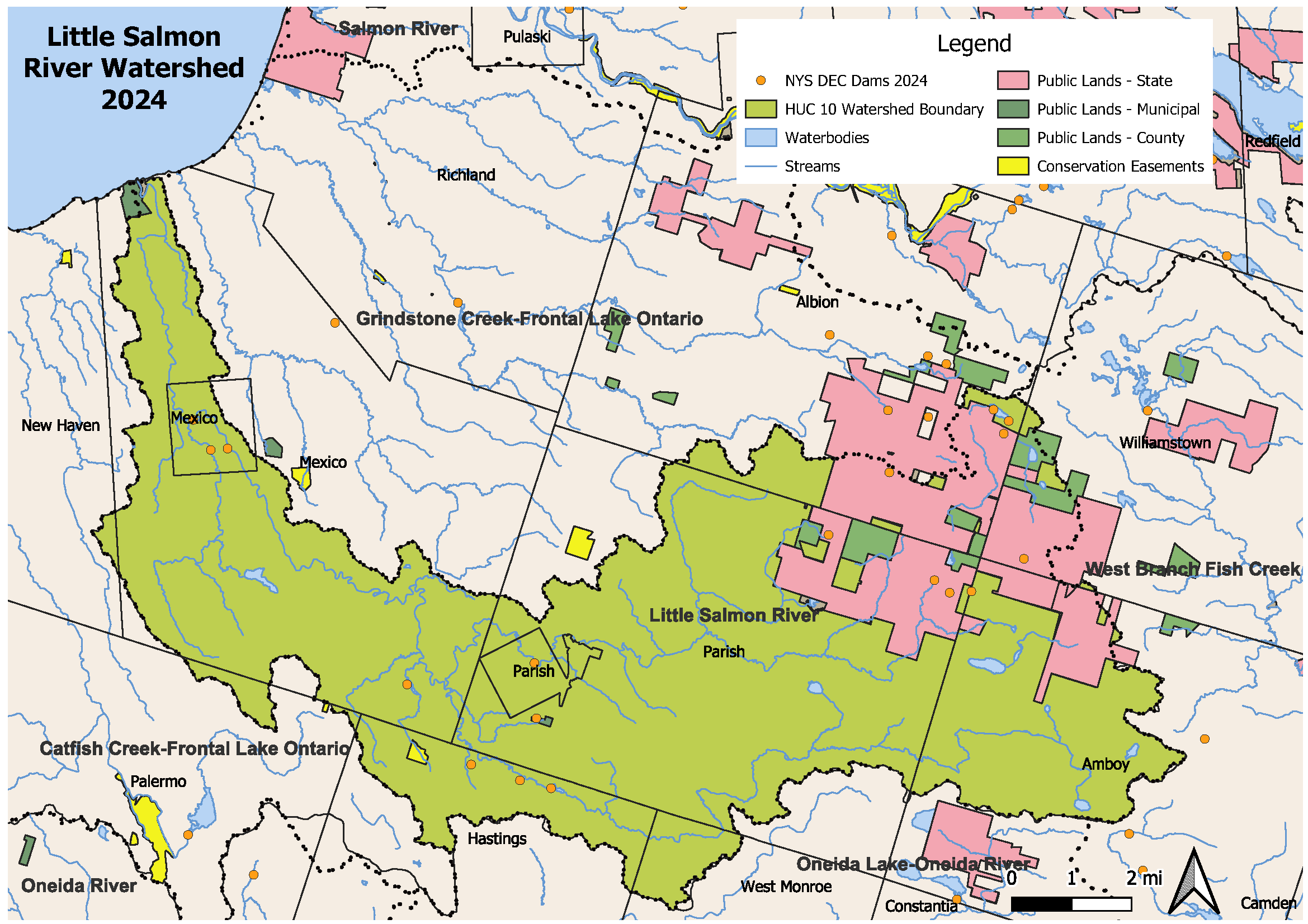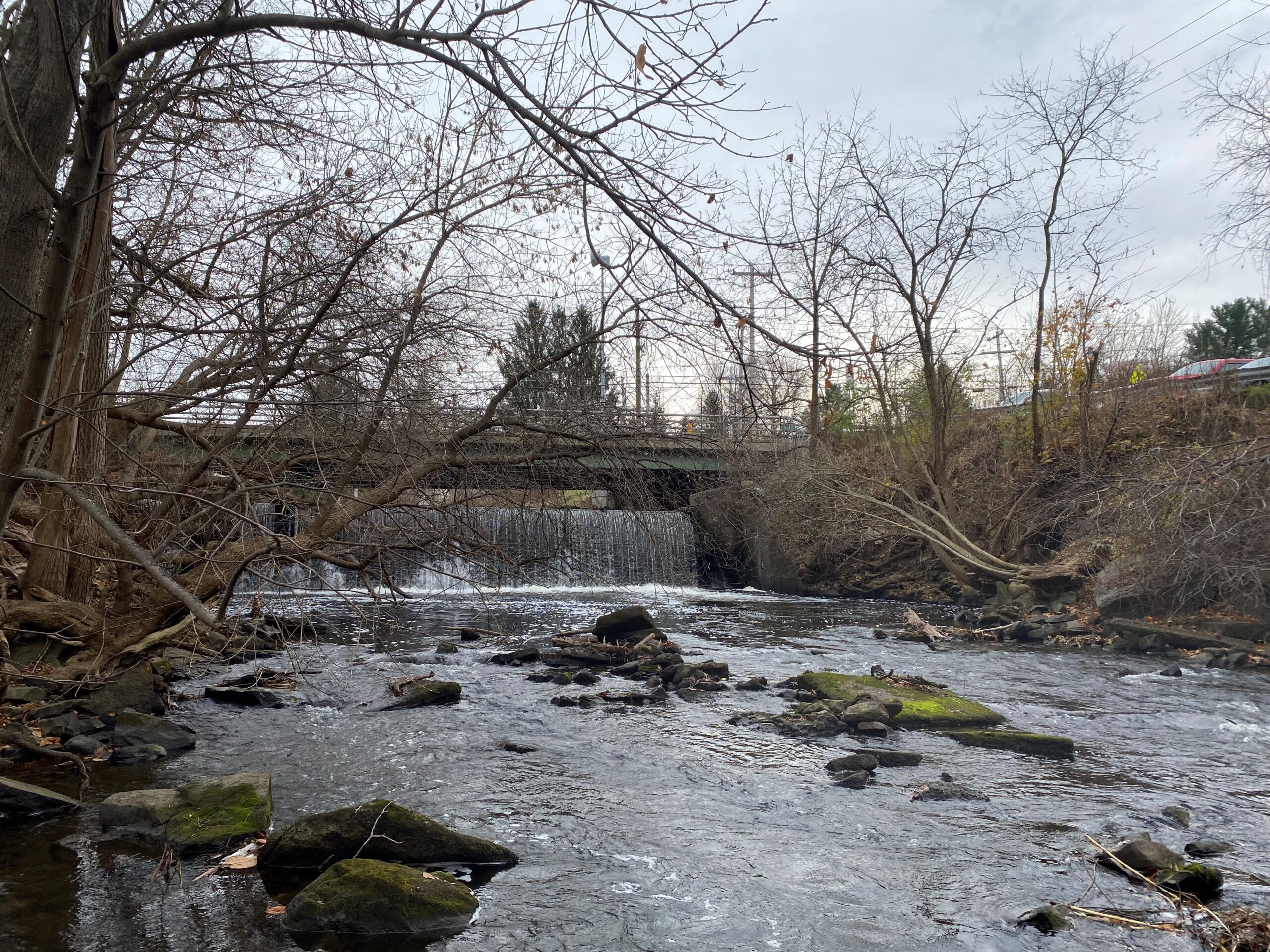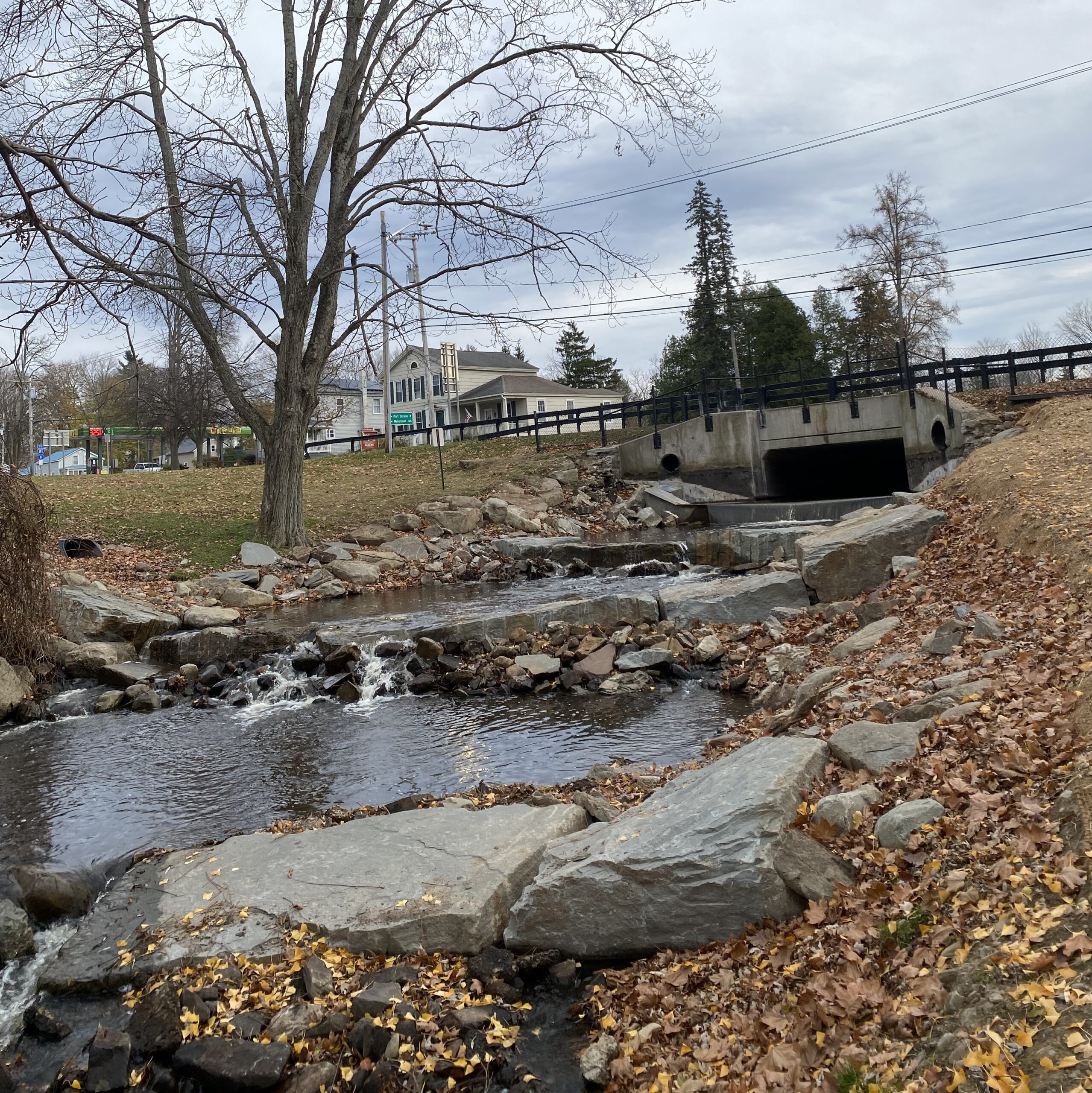Dam Overview
There are 5,736 state-regulated dams in New York State. Most of these dams were built prior to 1970. Like other infrastructure, as dams age, they require maintenance in order to maintain their structural integrity. The NYS Department of Environmental Conservation’s (DEC) Dam Safety Program maps, assigns hazard ratings, and conducts inspections on New York’s dams. As communities and independent dam owners confront the challenge of aging dams, there are many unique considerations for how to deal with individual dams. Dam removal can facilitate migratory fish passage, restore the dam and impoundment area to natural stream conditions, and eliminate a community hazard if the dam is compromised. Maintaining dams can be important for communities in some cases in order to retain an impoundment that is a community asset or maintain a historically or symbolically important community structure. Both options come with important price and funding considerations too. Additional resources are available at the bottom of this page.
Little Salmon River Watershed Dams
On August 28, 2024, the Tug Hill Commission facilitated an information meeting at the Village of Mexico office, focused on sharing information surrounding the dams in the Little Salmon River Watershed. The meeting was intended to serve as a forum for municipalities, other interested entities, and residents to learn about resources available through New York State and other organizations, and to provide input. Presentations from the meeting can be found at the bottom of this page.

Map of the Little Salmon River Watershed
Little Salmon Dam
The Village of Mexico owns the Little Salmon Dam, located next to the village office, on Main Street/Route 104. The dam breached (failed) in the past and is out of compliance with DEC’s dam safety standards. The dam is unable to be repaired in a way that would meet DEC dam safety regulations, necessitating its eventual replacement or removal. Replacement would be an excessive cost for village residents, with little or no opportunity for outside grant funding. The village has decided to pursue dam removal. Currently, the village has partnered with the Engineers Without Borders Club at Syracuse University to create a professionally engineered dam removal design. They will work in cooperation with NYS DEC, US Fish and Wildlife Service, Cornell Water Resources Institute, Great Lakes Fisheries Commission, and the NYS Tug Hill Commission.
As of June 2025, the Syracuse University Engineers Without Borders team is working on gathering more information about Little Salmon River Dam and is aiming to receive project approval through the USA National Engineers Without Borders organization as this is the formal route required for them to take.
Little Salmon Dam in the Village of Mexico. Photo by NYS Tug Hill Commission.
Youngs Mill Dam
Also in the Village of Mexico are the Ames Mill dam, owned by the Syra Canadian Club, on the Little Salmon River, and the Youngs Mill dam on Black Creek. The Youngs Mill dam is owned by the Mexico School District and was removed the summer of 2024. The dam was replaced with a sea lamprey barrier, and a series of step pools to facilitate fish passage. Despite dry conditions in fall 2024, salmon traversed the former dam for the first time in many decades later that year!
The Syra Canadian Club is collaborating with the Syracuse University Engineers Without Borders Club to explore dam remediation design options.
Youngs Mill Dam Pre-remediation. Photo courtesy of NYS DEC.
Youngs Mill Dam Post-remediation. Photo by NYS Tug Hill Commission.
Presentations from August 2025 Meeting
Syracuse University Engineers Without Borders – Rylee Smith, President, SU EWB & Gabby Terry, Project Manager, SU EWB
DEC Dam Owner Information & Dam Safety – Tio-Luwani Adebajo & Jacob Luther, NYS DEC Bureau of Flood Protection & Dam Safety [Note the presentation is not available, but the dam safety website is linked.]
Updates on Ghost Dams and Dam Safety Outreach in New York’s Great Lakes Region – Roy Widrig, NY Sea Grant
DEC Funding for Dam Removal Projects – Emily Fell, NYS DEC, NYS Water Resources Institute
Dam Removal Considerations: Aquatic Invasive Species (Sea Lamprey & Fanwort) – Nicole Lexson, Great Lakes Fishery Commission (Sea Lamprey) | Megan Pistolese & Adrien Owens, SLELO-PRISM (Fanwort)
Presentations from August 2024 Meeting
Oswego County Dam Overview and Rice Creek Dam Removal – Scott Prindle, NYS DEC
Dam Safety in the Northeast & Great Lakes – Roy Widrig, NY Sea Grant
Ecological Monitoring Surrounding Barrier Sites in the Village of Mexico – Jeremy Dietrich, Cornell University, New York State Water Resources Institute
Upstream Transition Following Dam Removal Example – Jeremy Dietrich, Cornell University, New York State Water Resources Institute
Funding for Watershed Resiliency Options – Emily Fell, NYS DEC, NYS Water Resources Institute at Cornell Water Resources Institute
Additional Information and Resources
DECinfo Locator (ny.gov) – Interactive map showing dam locations and hazard classifications
Dam Safety – NYSDEC – DEC’s Dam Safety Program
Review of Potential Dam Removal and Mitigation Opportunities in New York’s Great Lakes Basin
Dam Removal Funding in the Infrastructure Investment and Jobs Act
Questions?
Please direct any questions, comments, or concerns to Jillian Lee at jilliantughill.org.


